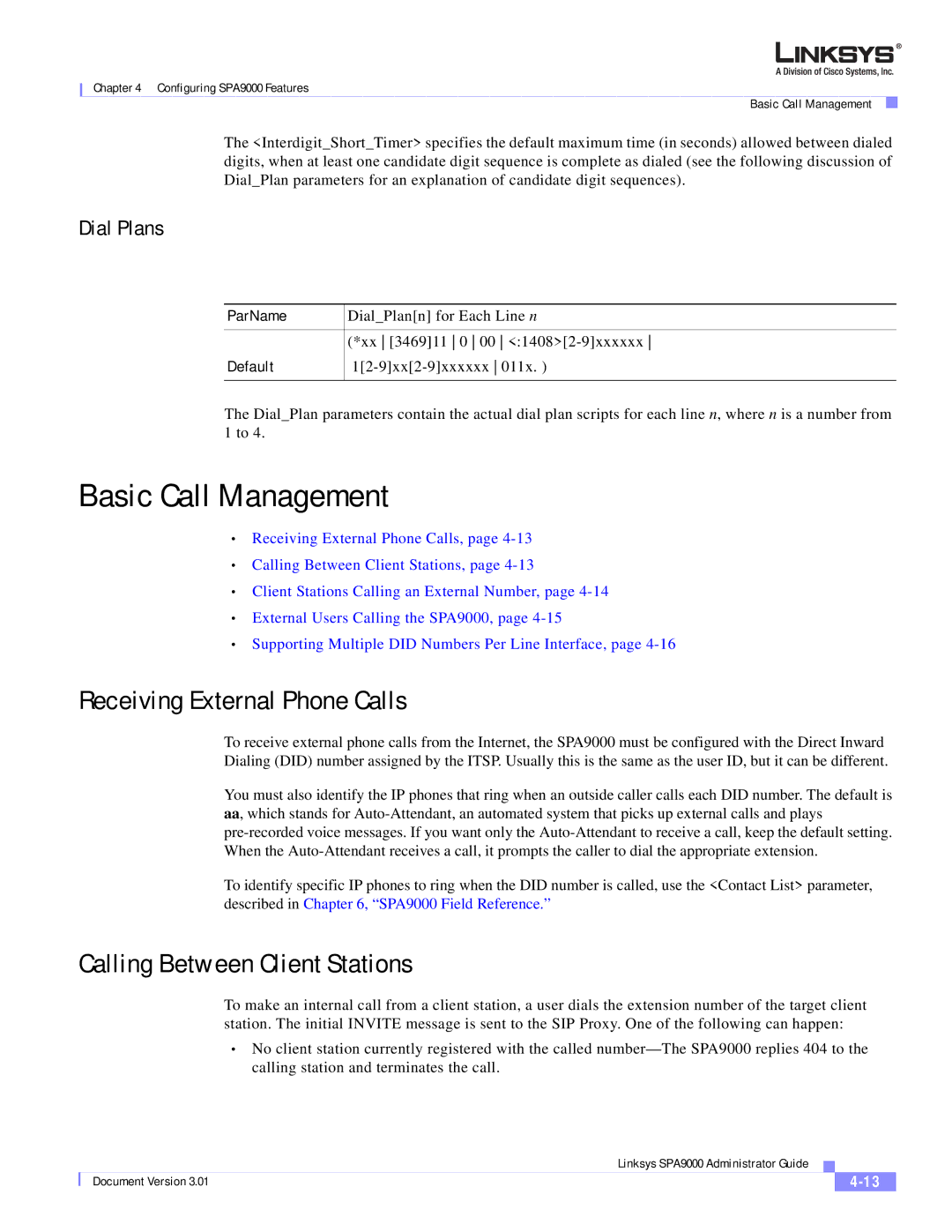
Chapter 4 Configuring SPA9000 Features
Basic Call Management
The <Interdigit_Short_Timer> specifies the default maximum time (in seconds) allowed between dialed digits, when at least one candidate digit sequence is complete as dialed (see the following discussion of Dial_Plan parameters for an explanation of candidate digit sequences).
Dial Plans
ParName | Dial_Plan[n] for Each Line n |
|
|
| (*xx [3469]11 0 00 |
Default | |
|
|
The Dial_Plan parameters contain the actual dial plan scripts for each line n, where n is a number from 1 to 4.
Basic Call Management
•Receiving External Phone Calls, page
•Calling Between Client Stations, page
•Client Stations Calling an External Number, page
•External Users Calling the SPA9000, page
•Supporting Multiple DID Numbers Per Line Interface, page
Receiving External Phone Calls
To receive external phone calls from the Internet, the SPA9000 must be configured with the Direct Inward Dialing (DID) number assigned by the ITSP. Usually this is the same as the user ID, but it can be different.
You must also identify the IP phones that ring when an outside caller calls each DID number. The default is aa, which stands for
To identify specific IP phones to ring when the DID number is called, use the <Contact List> parameter, described in Chapter 6, “SPA9000 Field Reference.”
Calling Between Client Stations
To make an internal call from a client station, a user dials the extension number of the target client station. The initial INVITE message is sent to the SIP Proxy. One of the following can happen:
•No client station currently registered with the called
|
| Linksys SPA9000 Administrator Guide |
|
| |
|
|
| |||
| Document Version 3.01 |
|
|
| |
|
|
|
| ||
